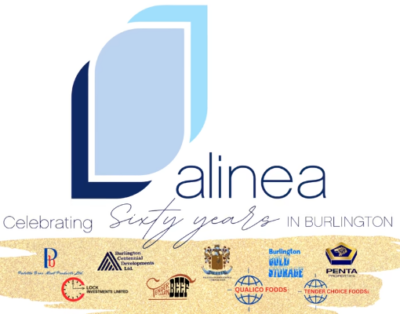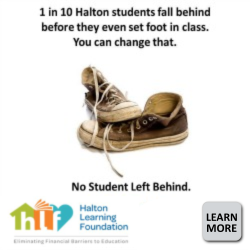 By Staff By Staff
November 29, 2024
BURLINGTON, ON
The Liberals’ GST holiday bill is one step closer to becoming law after it was passed by a majority of the House of Commons late Thursday night.
The two-month tax break covers dozens of items, including children’s clothes and toys, video games and consoles, Christmas trees, restaurant and catered meals, wine, beer, candy and snacks.
 It would take effect on December 14 and run until February 15, 2025, once it has been given Royal Ascent. It would take effect on December 14 and run until February 15, 2025, once it has been given Royal Ascent.
The government announced the plan as a way to ease affordability concerns during the holiday period. At the time, they also pledged to send $250 rebates to working Canadians in the spring, but that particular measure was not included in the bill.
The legislation to enact the tax break was the first bill passed through the House of Commons since late September, and required some procedural wrangling from the Liberals and the NDP to curtail the usual debate.
For more than two months, government business in the House has been on pause as the Conservatives filibuster a privilege motion related to misspending at a now-defunct green technology fund.
That debate, which has taken precedence over nearly all other House business, was paused in order to proceed with voting on the GST bill on Thursday.
Ontario to follow suit.
Ontario says Ottawa’s tax holiday will cost the province $1 billion, but it will support the GST break for consumers.
In provinces like Ontario, where the provincial and federal sales taxes are blended together into a harmonized sales tax, the entire HST would be removed from such items.
The office of Finance Minister Peter Bethlenfalvy confirms it will remove the provincial sales tax on items not already covered under provincial rebate.
This amounts to a 13% reduction on what you would pay at the cash register.
Many of the smaller retail organizations are going to have to scramble to update the software on their cash registers

 By Natalie Buriy By Natalie Buriy
November 29th
BURLINGTON, ON
Nowadays, a fairly large number of homeowners understand the impact of their living space on the environment. Because of this understanding, there is a certain ecological trend that is to create environmentally friendly outdoor spaces. Energy-saving exteriors, and active use of various environmentally friendly materials that help preserve the natural environment, these key things that are quite popular for outdoor design among numerous homeowners.
Eco-conscious homeowners are increasingly focusing on the successful implementation of various projects that reduce their carbon footprint while enhancing the beauty and functionality of their outdoor spaces. For example, permeable pavers provide groundwater recharge and prevent flooding and water pollution. It is important to know about the most interesting, modern outdoor design trends combined with environmental sustainability.
 Ecologically friendly homes reduce their carbon footprint while enhancing the beauty and functionality of their outdoor spaces.
Trend #1. Incorporating Native Plants into Landscape Design
One of the most impressive changes that homeowners can make to their outdoor spaces is to incorporate native plants into their landscape. Native plants are better adapted to local climates and require less water, fewer pesticides, and less maintenance than non-native species.
Trend #2. Using Sustainable Materials
Landscape design, which involves the active use of non-plant elements such as walkways, fences, and walls, is an important part of exterior design. When choosing materials for their landscaping, eco-conscious homeowners are increasingly choosing options that have the least impact on the environment. Recycled materials such as wood, crushed stone, and recycled concrete are becoming increasingly popular as eco-friendly alternatives to traditional (non-eco-friendly) materials.
 A rather interesting option for creating an environmentally sustainable outdoor environment is the use of permeable paving. Unlike traditional concrete or asphalt, permeable paving allows water to flow over the surface, reducing runoff and contributing to groundwater recharge. This is especially important in urban areas where impermeable surfaces can cause flooding and water pollution. Permeable paving helps reduce the urban heat island effect, a phenomenon that occurs due to the concentration of heat-absorbing materials such as concrete and asphalt. A rather interesting option for creating an environmentally sustainable outdoor environment is the use of permeable paving. Unlike traditional concrete or asphalt, permeable paving allows water to flow over the surface, reducing runoff and contributing to groundwater recharge. This is especially important in urban areas where impermeable surfaces can cause flooding and water pollution. Permeable paving helps reduce the urban heat island effect, a phenomenon that occurs due to the concentration of heat-absorbing materials such as concrete and asphalt.
Trend #3. Rainwater Harvesting and Irrigation Systems
Conserving water is a critical environmental consideration for homeowners looking to create sustainable outdoor spaces. One of the biggest trends in sustainable exterior design is the introduction of rainwater harvesting systems. These systems collect rainwater from your roof and store it in barrels or special tanks for later use for irrigation, reducing the need for municipal water systems. By using rainwater for gardening and landscaping, eco-conscious homeowners can significantly reduce their water use.
In addition to rainwater harvesting systems, smart irrigation systems are becoming an increasingly popular eco-friendly solution. These systems use special sensors to monitor soil moisture levels and adjust watering schedules accordingly. This ensures efficient water use, reduces losses, and prevents soil waterlogging.
Trend #4. Integrate Solar Panels into Your Exterior Design
Eco-conscious homeowners are incorporating solar panels into their exterior design to power their garden lights and other electrical systems. Modern solar lights are an environmentally conscious choice for lighting walkways, patios, and garden features. These lights are easy to install, require no wiring, and use less electricity, making them an energy-efficient alternative to traditional outdoor lighting. Solar energy can be used to power other objects, and solar panels are an effective, environmentally friendly, and affordable modern solution that makes it easy for homeowners to harness the sun’s energy to reduce their energy bills and reduce their impact on the environment.
Trend #5. Green roofs and vertical gardens
What are green roofs? They are a special type of roof covering that is planted with plants. They can be implemented on both flat and pitched roofs. They add a lot of beauty to the modern urban landscape and have many positive impacts on the environment. What are vertical gardens? They are special vertical plantings of plants on the walls of buildings. They have become very popular in recent years and create unique green spaces in modern cities:
- Green roofs covered with vegetation provide excellent thermal insulation for a house, reducing the need for heating and cooling;
- They help absorb rainwater, reducing runoff and providing an ecological habitat for birds and insects. Green roofs can be installed on both residential and commercial buildings, and they can be designed to support a wide range of plants, from herbs and shrubs to vegetables and flowers;
- In turn, vertical gardens can improve air quality, provide better thermal insulation, and help mitigate the effects of urban heat islands.
Trend #6. Edible Landscaping
 Another growing trend in outdoor design is edible landscaping, which involves incorporating fruits, vegetables, and herbs into your landscaping. This trend aligns with the desire to create self-sufficient and productive outdoor spaces that promote both environmental and personal well-being. Edible landscaping reduces the need for store-bought produce, which can have a large carbon footprint due to transportation and packaging. Another growing trend in outdoor design is edible landscaping, which involves incorporating fruits, vegetables, and herbs into your landscaping. This trend aligns with the desire to create self-sufficient and productive outdoor spaces that promote both environmental and personal well-being. Edible landscaping reduces the need for store-bought produce, which can have a large carbon footprint due to transportation and packaging.
Trend #7. Outdoor Living Spaces with Eco-Friendly Furniture
Eco-conscious homeowners are embracing sustainable options for the materials used in their furniture. Recycled plastic, bamboo, and reclaimed wood are all popular choices for outdoor furniture and decor. They are environmentally friendly, durable, and weather-resistant.
Trend #8. Wildlife-Friendly Landscaping
As biodiversity becomes more important, many homeowners are taking proactive steps to create wildlife-friendly landscapes. This includes choosing plants that provide food and shelter for local wildlife, such as birds, bees, butterflies, and other beneficial insects. Other design elements that promote wildlife conservation include birdhouses, bat boxes, and water features like bird ponds. These elements not only enhance the beauty of the outdoor space but also contribute to the health of local ecosystems.
Trend #9. Energy-efficient outdoor heating and cooling
Energy-efficient outdoor heating and cooling systems, such as solar heaters or geothermal heating systems, are gaining popularity as sustainable alternatives to traditional outdoor heating methods. By integrating energy-efficient heating and cooling solutions into their outdoor spaces, homeowners can reduce their overall energy consumption and create a comfortable, sustainable environment year-round.
Trend #10. Eco-Friendly Soil Stabilization
 Stabilizing the soil around a property. Eco-friendly soil stabilization methods, such as the use of geogrids or natural materials like gravel, are becoming increasingly popular solutions due to their ability to increase soil stability while allowing natural water flow.
Summary
Eco-friendly exterior design is the realization of environmentally sustainable, functional spaces that are in harmony with their surroundings. By choosing environmentally sustainable materials, utilizing water-saving practices, and supporting local wildlife, homeowners can create outdoor spaces that reduce their negative impact on the environment. For example, a solution for ground stabilization prevents erosion, provides overall improvement of soil structure, prevents damage from heavy rainfall and foot traffic, and supports healthy plant growth by allowing water and nutrients to reach the soil more efficiently. All of the above trends in sustainable exterior design reflect a growing commitment to environmental protection and the desire to build a more sustainable, ecological future.

 By Pepper Parr By Pepper Parr
November 29th, 2024
BURLINGTON, ON.
OPINION
There is a solution to the Sound of Music financial mess.
It is found within the record-breaking 43, 700 people who attended in June.
 One loonie  437,000 loonies in this barrel – solve the Sound of Music funding problem. Require every person that passes through the security set up to drop a loonie into a barrel.
The security people will put a stamp mark on your hand.
That will produce $43,700 in revenue,
The trademark statement that the Sound of Music is Canada’s biggest free musical invent to Sound of Music raising the funds it needs “One loonie at a time”
Related news stories:
City suggests a possible postponement of the 2025 Sound of Music event.
Sound of Music Chair tells their side of the financial mess.
 One loonie from each of them 
 By Staff By Staff
November 29th, 2024
BURLINGTON, ON
Inaria Burlington Inc. – 2030 Caroline Street
This should come as no surprise.
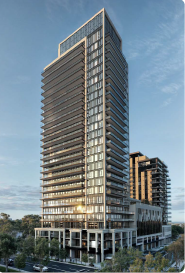 Originally the understanding was that this would be a six to eight storey structure with medical offices. The city decided on November 4th, 2024 to not approve the planned development applications submitted for an Official Plan Amendment and Zoning By-law Amendment for a 28-storey mixed use building with 302 residential units and a 6-storey above grade parking structure with a green roof adjacent to an existing 17-storey residential building bounded by Caroline Street, Elizabeth Street, Maria Street, and John Street.
The city advises that the developer has filed an Appeal with the Ontario Land Tribunal.
No details yet on the specifics.
The Committee of the Whole, in accordance with the Planning Act, held Public Meeting No. 14-24 on November 5, 2024, regarding the Official Plan and Zoning By-law Amendments for 2030 Caroline Street. Having considered the oral and written comments received from staff and the public, the Committee of the Whole approved the recommendation contained in the community planning department report which was to not approve tehe application
Councillor Kearns moved that the City:
Refuse the applications for Official Plan Amendment and Zoning By-law Amendment submitted by Inaria Burlington Inc. proposing a 28-storey mixed use building and 6-storey above grade parking structure with a green roof at 2030 Caroline Street.
IN FAVOUR: (6) Mayor Meed Ward, Councillor Galbraith, Councillor Kearns, Councillor Nisan, Councillor Stolte, and Councillor Bentivegna
OPPOSED: (1) Councillor Sharman
This decision was made at the Standing Committee level. It then went to council the following day where the Standing Committee recommendation was voted on by Council.

 By Pepper Parr By Pepper Parr
November 29th, 2024
BURLINGTON, ON
David Shepard sent a note along to Emilie Cote, Director of Recreation xxx reporting on what had taken place during the 2024 Sound of Music Festival.
Dave Shepherd is the Chairperson, Sound of Music Festival
2024 marked an extraordinary milestone for the Sound of Music Festival (SOM) as we welcomed a record-breaking 437,000 attendees to Burlington’s downtown core and Spencer Smith Park. This remarkable turnout surpassed our previous high of 417,000, demonstrating the festival’s continued growing appeal.
This surge in attendance translated into a monumental $32 million in community impact, almost 3X from $12 million achieved in 2019.
But the influence of SOM extends far beyond these numbers. Rooted in core pillars, SOM’s impact continues to resonate across the community:
Boosting the Economy
- Drives local tax revenue and employment
- Draws tourists from across the
- Supports 136 full-time equivalent (FTE) jobs in
- Provides summer student opportunities
Fostering Mental Health, Well-Being, and Inclusivity
- Provides barrier-free access to live music
- Creates opportunities for performers with special needs
- Offers low-sensory activities for
Bolstering Community Pride
Who are we?
Sound of Music Inc. (SOM) has been uniting millions of residents, visitors, and tourists through live music at Burlington’s iconic waterfront for over four decades. As Burlington’s premier non- profit live music organization, SOM proudly hosts the last ‘free’ live music festival event in Canada. Powered by the passion of sponsors and volunteers, SOM not only delivers unparalleled cultural and community value but also drives a significant economic impact for the region.
What We Do
Each June, SOM transforms downtown Burlington into a vibrant hub of music and celebration. With performances by local and internationally acclaimed artists, there’s something for everyone.
Festival highlights include:
- Three Mainstages showcasing diverse musical
- A lively parade winding through local
- A family zone, midway, and the bustling StreetFest.
- A vibrant club series and a platform for emerging local artists – ending with the Battle of the Bands at BPAC for a chance to play the big stage at SOM!
This dynamic lineup ensures that audiences of all ages and tastes can celebrate the joy of live music together.
Why We Do It
Music has an unparalleled ability to connect people from all walks of life, inspiring unity, compassion, and a sense of community. It strengthens mental health, transcends barriers, and brings joy—regardless of race, creed, color, gender, orientation, ability or socio-economic background.
For over 45 years, SOM has been dedicated to ensuring that music remains a barrier-free and inclusive experience, allowing everyone in our community to come together and celebrate the transformative power of music.
Volunteer Engagement at New Heights:
- Over 1,600 volunteer opportunities, with more than 600 new volunteers
joining. Volunteers contributed 6,000+ hours to the festival’s
Social Media and Media Reach:
- A stunning 18,500,000+ social media engagements,
- More than 20 million traditional media impressions, extending SOM’s visibility far beyond Burlington.
A Cornerstone of Summer in Burlington
These achievements highlight SOM’s undeniable role as a catalyst for economic growth, cultural enrichment, and community pride. While it’s difficult to measure the deep emotional connection so many feel toward this iconic event, 2024 underscored SOM’s status as a cornerstone of Burlington summers—a celebration of music, community, and the city we love.
Financial Challenges and Strategic Adjustments at the 2024 Festival
The 2024 Sound of Music Festival achieved remarkable success in terms of attendance and economic impact. However, it also faced significant financial challenges due to unprecedented cost increases, which hindered the ability to reinvest in the festival’s future. The Board of Directors in May of 2024 took over operational control of the festival to ensure the event continued.
Governance:
The Board has made extensive changes, went from governance to operational, and prepared a skills matrix to ensure new directors were brought on with the correct skills and acumen needed to be successful. Sub-committees are effective, and the Board have made relationships work with all volunteers.
The mandate is transparency and fiscal responsibility.
We are stable, and all directors are engaged with the future and current state.
Impact of Rising Costs
Supply chain and supplier cost increases resulted in inflation for many expenditures. These rising costs posed significant obstacles to maintaining the festival’s operational and financial stability.
Strategic Budget Adjustments
In response to these challenges, careful budgetary decisions were made to mitigate costs for 2025 while preserving SOM’s core values and community impact. Adjustments include:
- Budget Reductions of over $0.35M from 2024: Focused on cost savings for key components including Parade and StreetFest
- Operational Cost Reductions: Streamlining infrastructure by reducing the number of summer students and reducing to zero full time employee’s year round.
- Maximizing Internal Resources: Leveraging more of the contributions of year-round volunteers, and more capital donations from local business
Financial Outcome and Next Steps
Our financial shortfall underscores the need for immediate action to safeguard the festival’s momentum for 2025. SOM is committed to being a stand-alone organization. We do not want to be a financial burden on the city or the community.
We plan to continue to run the festival in a surplus cash position for the next 2 years, with 2026 becoming financially sound with no legacy debt. With a mandate to explore a stronger partnership with Burlington Performing Arts Centre. (BPAC)
The need/ the ask:
- Carry on with continued support financially, from the City and BPAC each January 1. This is needed for the festival to continue to operate.
- We are asking that the current loan from the COB to SOM of $125K, have new repayment terms, of $7500 per month, from Jan 2025 to July Our intent will be a full repayment completed by September 1, 2025.
- We are asking for relief on the $92k in City Payables from 2022 and 2023/24. This accounts for almost 25% of our legacy debt in total.
Thanks for your time and thank you for your continued support each year. This truly is a community-run event!
Dave Shepherd, CHRE, CDC
Chairperson, Sound of Music Festival Encl.

 By Staff By Staff
November 28th 2024
BURLINGTON, ON
What is Public Medicare? ‘you don’t know what you got till its gone’
Public Medicare is the public health care system in Canada which is funded through our taxes. When you see a doctor or visit the hospital for medically necessary services using your OHIP card, you are using Public Medicare. Under Public Medicare, all Canadian residents can receive medically necessary hospital and physician services based on their medical need without user fees or charges. Health care is provided without cost based on our medical need, paid in our taxes, rather than based on our ability to pay or our wealth. Public Medicare enjoys a high level of support from Canadians. It is a source of pride for many, but years of relentless cuts and governments pushing privatization have contributed to problems in Medicare. The solution is not to privatize but to plan well, reorganize care in the public system, and restore and rebuild services that have been cut and downsized too far.
What is it like to not have Medicare?
- Before Public Medicare, Canadians had no choice but to forego medical treatment because they did not have the money to pay for care, leading to suffering and death. Helen Heeney’s book Life Before Medicare tells the story of a young woman with cancer who refused pain medication because it would bankrupt her family. For two months, she had her husband lock her in their home when he left for work so that no one could enter to help her when they heard her screaming in pain. She did not want to bankrupt her family as she was dying.
- In the United States where private insurance and for-profit delivery of health care services are widespread, health care costs are almost double per person those in Canada.
- More than 26 million Americans did not have health insurance in 2023 and 38% of residents in the United States delayed getting medical treatment because they could not afford it.
Achieving Public Medicare & the Canada Health Act
1947: The first public hospital insurance plan in Canada was introduced by the Saskatchewan government led by Tommy Douglas.
1957: The federal government, with Paul Martin Sr. as Health & Welfare Minister, introduced the Hospital Insurance and Diagnostic Services Act (1957) that brought in public hospital insurance across the country. The funding arrangement was that the federal govt shared half the cost of provincial/territorial hospital insurance plans. It faced strong opposition from pro-privatization forces wanting to bill patients directly (doctors, insurance companies, and large corporations).
1959: Ontario created a public provincial hospital insurance plan in 1959.
1961:
-
 All provinces and territories had implemented a public hospital insurance plan by 1961. All provinces and territories had implemented a public hospital insurance plan by 1961.- In 1961, Saskatchewan passed legislation to expand their Medicare program to cover physician care outside of hospitals(e.g. doctors’ offices), prompting a three-week strike by doctors who wanted control and wanted to be able to extra-bill patients. The government held strong and brought in Public Medicare but with amendments allowing doctors to opt out of the plan. By 1965, once it was in operation, the majority of doctors supported the plan.
1964: The federal Diefenbaker government’s Royal Commission on Health Services led by Justice Emmett Hall called for national Public Medicare.
1966: The Medical Care Act (1966) was passed so that doctors and medical care would be covered for all Canadians (not just in hospital). The federal govt would share half of the cost with the provinces/territories.
1972:Each province and territory had implemented Public Medicare plans for hospital and physician services by 1972.
1984: In response to doctors extra-billing patients (charging patients extra user fees on top of OHIP/the provincial public health plan), the Canada Health Act was passed in 1984, establishing five principles for our health care system and banning extra-billing and user fees.
 Tommy Douglas – the Saskatchewan politician who fought for public health care. 5 Principles of the Canada Health Act
-
-
- Portability: Health coverage must not end or stop when a person travels or moves between provinces/territories in Canada.
- Accessibility: All insured individuals must have reasonable access to health care without barriers, such as financial or physical limitations.
- Universality: All Canadians must be covered by Public Medicare on equal terms and conditions.
- Comprehensiveness: All medically necessary hospital and physician services must be covered, even when the services are provided by another designed health professional.
- Public Administration: Provinces and territories must operate their health insurance plans on a non-profit basis. They must also be administered and operated by a public authority.
1995: The federal Chrétien government with Paul Martin (Jr.) as Finance Minister, brought in major cuts in the federal budget. The Canada Health and Social Transfer (CHST) combined funding for health, education and social services into one block fund and they cut federal health transfers by 40%. These cuts, combined with provincial cuts, led to the expansion of private clinics.
2001: The federal government created a National Commission (known as the Romanow Commission) on the future of Medicare, in part because of the crisis caused by the cuts.
2002: The 2002 Romanow Report called for the creation of the Canada Health Transfer (CHT) that would separate out health funding from other federal transfers and an escalator clause in the CHT to match inflation.
2004:
-
- Ontario’s Commitment to the Future of Medicare Act was passed to uphold the Canada Health Act. It bans extra-billing, user fees, queue jumping, and restricting access to insured services through block or annual fees. It sets out fines and jail terms for offenders who accept payment for an OHIP-covered service and requires the Ministry of Health to reimburse patients for unlawful extra-billing and user fees.
- The 2004 Health Accord introduced a 6% escalator for the CHT to offset the huge cuts made in the 1990s – although privatization had already gained a foothold. It also increased the federal share of health funding, not back to the historic 50-50 split with the provinces, but back to the 20% range (varying among provinces).
2006: The 2006 election of the Harper government halted progress as they sought to remove themselves from health care policy and refused to attend First Ministers’ meetings.
2011: The Harper government announced cuts to the funding formula that governed CHT increases by tying them to changes in GDP with a floor of 3% starting in 2017, eliminating the 6% escalator agreed upon in the 2004 Accord. The impact was estimated by the provinces to be a reduction in federal public health care funding by $36 billion over ten years compared to what provinces would have received under the 6% escalator.
2016-2017: During the 2016-17 Health Accord negotiations, the Trudeau govt only minimally modified Harper’s cut to the funding formula. After the provinces and territories rejected their proposal, the Trudeau govt left the negotiating table. They then went province-by-province pushing through 10-year bilateral deals (that means different deals between the federal government and each province) to pressure all the provinces and territories into adopting their proposal.
2022: Legislation to implement a national dental care insurance plan was passed in 2022. However, the federal govt contracted a private insurance corporation (Sun Life) to administer the plan.
2024: The Pharmacare Act was passed in October 2024 to create a national pharmaceutical insurance plan, starting with coverage for contraceptives and diabetes medications.
There are governments that want to privatize public health. You want to think really hard about that. Joni Mitchell made it clear: ‘you don’t know what you got till its gone’

 By Pepper Parr By Pepper Parr
November 28th, 2024
BURLINGTON, ON
We knew the Sound of Music (SoM) was in trouble – now we know just how much.
 Is this event about to come to an end? When we last asked the City Communications people when the $125k that was loaned was due to be repaid – we were told we would have to get that answer from the SoM people – And they ain’t talking.
In a report that will go to a Council Standing Committee next week Staff layout several options.
 Careers have started on this stage. Option 1: This option supports the SOM board proposal, as outlined in Appendix B where the city would forgive the arrears amount of approximately $95K and proceed with the mutually agreed upon re-payment terms for the $125K loan. In this option, staff would provide Sound of Music with its 2025 $150K grant in January and request a comprehensive business plan for the 2026 Festival to the satisfaction of the Commissioner of Community Services, Commissioner of Legal Services and Chief Financial Officer. This status quo approach would include a detailed service level agreement, incorporating elements from the recently endorsed Accountability Framework, to guide future collaboration and ensure clear expectations moving forward.
Note: The Appendix B mentioned will be part of another article,
Option 2: This option suggests that the city pause the 2025 grant, forgive the arrears amount totaling approximately $95K and the $125K loan. This option also recommends that SOM take a one-year hiatus from the festival to allow time for strategic planning and the exploration of potential long-term partnership opportunities. This option allows the BOD dedicated time to focus on the evolution of the festival with the goals of meeting Burlington’s community needs while remaining fiscally responsible. Going forward, all future grants would be contingent upon the establishment of a detailed service level agreement, incorporating principles from the recently endorsed Accountability Framework, to ensure clear expectations and accountability moving forward.
 She is having a great time – biggest free musical festival in the country – and it is in trouble. Option 3: This option proposes that the city forgive the outstanding arrears, which total approximately $95,000. Under this plan, the city would follow the repayment schedule outlined in Appendix B, recouping $45,000 from the upcoming payments due from January to June 2025. This amount would be deducted from the 2025 grant, reducing it to $105,000. The remaining $80,000 of the loan repayment would be due by September 1, 2025, as outlined in SOM’s proposal. Additionally, the city would encourage SOM’s Board of Directors to consider scaling down the 2025 event as part of a strategy to rebuild and plan for future sustainability. Going forward, all future grants would be contingent upon the establishment of a detailed service level agreement that incorporates the principles from the newly endorsed Accountability Framework, ensuring clear expectations and accountability
Sound of Music will have problems with expectations and accountability –it’s never been something they ever managed to get a firm grip on.
For those of you who want to get your two cents worth in on this issue: BRAG Burlington Residents’ Action Group is running a survey. Here is the link to that.
Related news stories:
What happened to the idea that Performing Arts would take over SoM?
Is anyone going to talk about the $4000 that was reported to have moved from SoM to unnamed people at BPAC?

 By James Porthouse By James Porthouse
November 28th, 2024
BURLINGTON, ON
This information is not professional investment advice. Investors are advised to do their own research into individual stocks before making an investment decision.
The five stocks with the largest dollar value of insider acquisitions in the public market are:
|
| SNDL Inc. (formerly Sundial Growers Inc.) —–Buy Quantity: 200,000 Average cost: $2.82 Total: $564,247.20 |
| Insider |
Relationship |
Transaction |
Date |
Quantity |
Price |
Total |
| Cannell, James Carlo |
4 – Director of Issuer |
10 – Acquisition or disposition in the public market |
11-25-24 |
100,000 |
$2.86 |
$286,334.40 |
| Cannell, James Carlo |
4 – Director of Issuer |
10 – Acquisition or disposition in the public market |
11-22-24 |
100,000 |
$2.78 |
$277,912.80 |
|
| Stantec Inc —–Buy Quantity: 4,000 Average cost: $121.49 Total: $485,960.00 |
| Insider |
Relationship |
Transaction |
Date |
Quantity |
Price |
Total |
| Culmone, Vito |
7 – Director or Senior Officer of Insider or Subsidiary of Issuer (other than in 4,5,6), 5 – Senior Officer of Issuer |
10 – Acquisition or disposition in the public market |
11-27-24 |
4,000 |
$121.49 |
$485,960.00 |
|
| MDA Space Ltd —–Buy Quantity: 3,800 Average cost: $28.49 Total: $108,262.00 |
| Insider |
Relationship |
Transaction |
Date |
Quantity |
Price |
Total |
| Wu, Yung Cheng |
4 – Director of Issuer |
10 – Acquisition or disposition in the public market |
11-22-24 |
3,800 |
$28.49 |
$108,262.00 |
|
| Anaergia Inc —–Buy Quantity: 135,400 Average cost: $0.65 Total: $88,010.00 |
| Insider |
Relationship |
Transaction |
Date |
Quantity |
Price |
Total |
| Wolf, Greg |
5 – Senior Officer of Issuer |
10 – Acquisition or disposition in the public market |
11-22-24 |
135,400 |
$0.65 |
$88,010.00 |
|
| Vecima Networks Inc —–Buy Quantity: 4,000 Average cost: $17.22 Total: $68,860.00 |
| Insider |
Relationship |
Transaction |
Date |
Quantity |
Price |
Total |
| 684739 B.C. Ltd. |
3 – 10% Security Holder of Issuer |
10 – Acquisition or disposition in the public market |
11-26-24 |
500 |
$17.17 |
$8,585.00 |
| Kumar, Saket |
8 – Deemed Insider – 6 Months before becoming Insider, 6 – Director or Senior Officer of 10% Security Holder, 5 – Senior Officer of Issuer |
10 – Acquisition or disposition in the public market |
11-26-24 |
500 |
$17.17 |
$8,585.00 |
| Kumar, Sumit |
8 – Deemed Insider – 6 Months before becoming Insider, 4 – Director of Issuer, 6 – Director or Senior Officer of 10% Security Holder, 5 – Senior Officer of Issuer |
10 – Acquisition or disposition in the public market |
11-26-24 |
500 |
$17.17 |
$8,585.00 |
| Kumar, Surinder Ghai |
3 – 10% Security Holder of Issuer, 4 – Director of Issuer |
10 – Acquisition or disposition in the public market |
11-26-24 |
500 |
$17.17 |
$8,585.00 |
| 684739 B.C. Ltd. |
3 – 10% Security Holder of Issuer |
10 – Acquisition or disposition in the public market |
11-22-24 |
500 |
$17.26 |
$8,630.00 |
| Kumar, Saket |
8 – Deemed Insider – 6 Months before becoming Insider, 6 – Director or Senior Officer of 10% Security Holder, 5 – Senior Officer of Issuer |
10 – Acquisition or disposition in the public market |
11-22-24 |
500 |
$17.26 |
$8,630.00 |
| Kumar, Sumit |
8 – Deemed Insider – 6 Months before becoming Insider, 4 – Director of Issuer, 6 – Director or Senior Officer of 10% Security Holder, 5 – Senior Officer of Issuer |
10 – Acquisition or disposition in the public market |
11-22-24 |
500 |
$17.26 |
$8,630.00 |
| Kumar, Surinder Ghai |
3 – 10% Security Holder of Issuer, 4 – Director of Issuer |
10 – Acquisition or disposition in the public market |
11-22-24 |
500 |
$17.26 |
$8,630.00 |
The five stocks with the largest dollar value of insider dispositions in the public market are:
|
| Manulife Financial Corporation —–Sell Quantity: -257,592 Average cost: $44.92 Total: -$11,570,368.62 Options Issued: 256,592 Average cost: $19.86 Total: $5,096,562.56 |
| Insider |
Relationship |
Transaction |
Date |
Quantity |
Price |
Total |
| Finch, Steve |
5 – Senior Officer of Issuer |
51 – Exercise of options |
11-26-24 |
91,445 |
$19.59 |
$1,791,037.55 |
| Finch, Steve |
5 – Senior Officer of Issuer |
10 – Acquisition or disposition in the public market |
11-26-24 |
-91,445 |
$45.34 |
-$4,146,152.34 |
| Gallagher, James D. |
5 – Senior Officer of Issuer |
51 – Exercise of options |
11-26-24 |
107,239 |
$21.33 |
$2,286,923.29 |
| Gallagher, James D. |
5 – Senior Officer of Issuer |
10 – Acquisition or disposition in the public market |
11-26-24 |
-107,239 |
$44.83 |
-$4,807,624.36 |
| Lorentz, Paul |
5 – Senior Officer of Issuer |
51 – Exercise of options |
11-27-24 |
57,908 |
$17.59 |
$1,018,601.72 |
| Lorentz, Paul |
5 – Senior Officer of Issuer |
10 – Acquisition or disposition in the public market |
11-27-24 |
-57,908 |
$44.41 |
-$2,571,578.46 |
| Silva, Anthony Alex |
7 – Director or Senior Officer of Insider or Subsidiary of Issuer (other than in 4,5,6) |
10 – Acquisition or disposition in the public market |
11-27-24 |
-1,000 |
$45.01 |
-$45,013.45 |
|
| CGI Inc —–Sell Quantity: -31,301 Average cost: $156.74 Total: -$4,906,106.78 Options Issued: 27,152 Average cost: $73.11 Total: $1,984,955.95 |
| Insider |
Relationship |
Transaction |
Date |
Quantity |
Price |
Total |
| Henderson, Dave |
5 – Senior Officer of Issuer |
51 – Exercise of options |
11-25-24 |
10,000 |
$55.70 |
$556,950.00 |
| Henderson, Dave |
5 – Senior Officer of Issuer |
10 – Acquisition or disposition in the public market |
11-25-24 |
-14,149 |
$156.79 |
-$2,218,400.78 |
| Strass, Torsten |
5 – Senior Officer of Issuer |
51 – Exercise of options |
11-22-24 |
5,800 |
$78.63 |
$456,047.71 |
| Strass, Torsten |
5 – Senior Officer of Issuer |
10 – Acquisition or disposition in the public market |
11-22-24 |
-5,800 |
$156.60 |
-$908,280.00 |
| Strass, Torsten |
5 – Senior Officer of Issuer |
51 – Exercise of options |
11-25-24 |
11,352 |
$85.62 |
$971,958.24 |
| Strass, Torsten |
5 – Senior Officer of Issuer |
10 – Acquisition or disposition in the public market |
11-25-24 |
-11,352 |
$156.75 |
-$1,779,426.00 |
| Strass, Torsten |
5 – Senior Officer of Issuer |
90 – Change in the nature of ownership |
11-26-24 |
200 |
$0.00 |
$0.00 |
|
| Ivanhoe Mines Ltd —–Sell Quantity: -100,000 Average cost: $18.97 Total: -$1,897,223.00 Options Issued: 100,000 Average cost: $2.51 Total: $251,410.00 |
| Insider |
Relationship |
Transaction |
Date |
Quantity |
Price |
Total |
| Zhou, Chao (Peter) |
5 – Senior Officer of Issuer |
51 – Exercise of options |
11-25-24 |
100,000 |
$2.51 |
$251,410.00 |
| Zhou, Chao (Peter) |
5 – Senior Officer of Issuer |
10 – Acquisition or disposition in the public market |
11-25-24 |
-100,000 |
$18.97 |
-$1,897,223.00 |
|
| Cameco Corporation —–Sell Quantity: -6,729 Average cost: $81.60 Total: -$549,111.81 Options Issued: 6,729 Average cost: $14.16 Total: $95,270.53 |
| Insider |
Relationship |
Transaction |
Date |
Quantity |
Price |
Total |
| Mooney, Ronald Liam |
5 – Senior Officer of Issuer |
51 – Exercise of options |
11-25-24 |
6,729 |
$14.16 |
$95,270.53 |
| Mooney, Ronald Liam |
5 – Senior Officer of Issuer |
10 – Acquisition or disposition in the public market |
11-25-24 |
-6,729 |
$81.60 |
-$549,111.81 |
|
| Kinaxis Inc —–Sell Quantity: -3,000 Average cost: $174.50 Total: -$523,500.00 Options Issued: 3,000 Average cost: $112.17 Total: $336,510.00 |
| Insider |
Relationship |
Transaction |
Date |
Quantity |
Price |
Total |
| Surana, Kushan Krishna |
5 – Senior Officer of Issuer |
00 – Opening Balance-Initial SEDI Report |
11-25-24 |
0 |
$0.00 |
$0.00 |
| Ticala, Vasile Gelu |
5 – Senior Officer of Issuer |
51 – Exercise of options |
11-26-24 |
3,000 |
$112.17 |
$336,510.00 |
| Ticala, Vasile Gelu |
5 – Senior Officer of Issuer |
10 – Acquisition or disposition in the public market |
11-26-24 |
-3,000 |
$174.50 |
-$523,500.00 |
What is Insider Trading?
How Insider Trading works.

 By Staff By Staff
November 28th, 2024
BURLINGTON, ON
The Burlington Foundation announced the distribution of $300,000 in local grant funding, the largest single round of granting made from its Burlington Community Fund in the organization’s 25-year history.
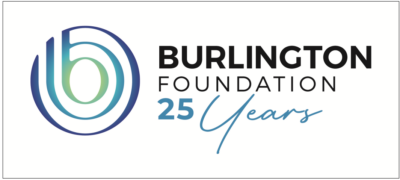 This amount is a significant boost from the last cycle of funding from the Burlington Community Fund, thanks to the generosity of community donors who continue to entrust the Foundation with their giving. This amount is a significant boost from the last cycle of funding from the Burlington Community Fund, thanks to the generosity of community donors who continue to entrust the Foundation with their giving.
These grants will benefit 33 charitable organizations to address important needs in our community. This year’s areas of focus included mental health, food security, the needs of children and youth, and safe housing, to name a few. Collectively, these grants will provide vital resources to community organizations working to advance the well-being of Burlington.
“Burlington is a deeply generous community, and we are grateful to partner with people and businesses that care about the well-being of everyone in Burlington,” says Burlington Foundation CEO Megan Tregunno. “As Burlington’s trusted partner in philanthropy, we have a unique ability to evolve with the needs of our city and bring research, insights and learning to residents who want to join us as donors and be part of addressing our community’s most vital needs.”
 Those baking trays are a clue to how local Megan Tregunno is – her grandmother, Norma Bidwell, was the longtime Recipe Editor at the Hamilton Spectator. “She was one of the first mentors in my life — growing up with her was a pretty special experience,.” The Burlington Foundation’s annual granting program provides grants through its Burlington Community Fund – a dedicated unrestricted endowment Fund established to support the greatest needs of our community. This represents one cycle of funding provided by the Burlington Foundation on an annual basis. The Foundation stewards more than 100 donor advised funds, which are permanently invested and provide annual returns that are then granted back to the community year over year.
The Burlington Community Fund is made up of donations from the community and named donor-advised funds from generous individuals and businesses. These grants will support programs aimed at mental health (Capillary Wave Community for Men, Canadian Mental Health Association Halton), food security (Food4Kids Halton, Burlington Food Bank), and children and youth (The Lighthouse for Grieving Children, Centre for Diverse Learners), and more.
The need for these essential services is immediate and growing. A recent report from the Canadian Mental Health Association found that youth across Canada, especially girls and 2SLGBTQIA+ youth, are more likely to struggle with their mental health and a lack of services. In 2019, 12% of youth-rated their mental health as “poor” or “fair.” In 2023, that number more than doubled to 26%.
Food security also continues to be a concern in many communities, including Burlington. According to
Statistics Canada, nearly 23% of Canadians – about 8.7 million people – lived in households experiencing food insecurity in 2022. This was an increase of nearly 1.8 million people from the previous year and was the second consecutive year of increases since the pandemic began.
The Burlington Foundation is proud to support these community organizations in the important work they undertake for the benefit of community well-being. Together, we are creating an informed, engaged and generous community.
About the Burlington Foundation
Since 1999, the Burlington Foundation has been our city’s trusted partner in philanthropy. Thanks to the generosity and vision of its donors and fundholders, the Burlington Foundation has provided $11.4 million in charitable grants to community organizations since its inception. Last year, the Foundation granted over $1.2M in funding to more than 120 organizations across Burlington and surrounding communities. The Burlington Foundation is part of a network of more than 200 community foundations across Canada, working to create communities where everyone belongs.
The 33 organizations receiving grants from the Burlington Foundation are listed below. While these organizations may represent a primary category, the intersectional nature of the social determinants of health means these organizations are addressing many important outcomes, such as improved mental health and inclusion.
- Art Gallery of Burlington– in support of the Youth Art Bursary Program
- ArtHouse for Children and Youth – in support of the CREATE 0 program, part of offering free arts-based programs for children and youth ages 7-17.
- Burlington Symphony Orchestra – in support of BSO Operation Youth
- Centre for Diverse Learners – in support of the Mastering Mathematics Program
- Community Development Halton – in support of the creation of a youth leadership team
- Community Living Burlington – in support of the Sibshops Workshop Initiative, which will expand the existing sibling support program for children and teens who have siblings with disabilities.
- Dare To Be Youth (DTBY) Charity – in support of the Building Bridges Program, which will help youth who are ineligible for programs after age 18.
- ErinoakKids Centre for Treatment and Development – in support of the respite program
- Food4Kids Halton – in support of the Weekends Without Hunger Program, providing food to children in need for the weekend, when there are no school programs.
- Halton Food for Thought – in support of continued programming to provide student nutrition programs in Halton schools
- Halton Women’s Place – to support the creation of a dedicated Teen Zone, as there has been a rising number of youth ages 12-16 arriving with their mothers fleeing domestic violence.
- Re-Imagine Ontario – in support of the G.A.M.E. Program, which provides sports and mentoring initiatives aimed at male youths 10-17 years The organization has a particular focus on Black youth.
- STEM Camp Foundation – in support of STEM camp bursaries, awards, and scholarships (summer 2025)
- STRIDE-Supported Training and Rehabilitation in Diverse Environments – in support of the continuation of STRIDE’s existing initiatives to help youth employment outcomes.
- The Cedarbrook Society O/A The Darling Home for Kids – in support of the Opportunities Fund, which will help with the existing purpose of providing respite, residential and hospice palliative care to children.
- The Lighthouse for Grieving Children – in support of grief support programs
- YMCA Hamilton|Burlington|Brantford – in support of the Rise Up! & Elevate BIPOC Youth Program
Related news story:
Burlington Foundation gets new President

 By Staff By Staff
November 28th, 2024
BURLINGTON, ON
CUPE health care workers demonstrated outside the at Joseph Brant Hospital on Wednesday protesting job cuts that they claim pose serious risks to patient care and expose the government’s policy of underfunding hospitals.
The hospital is eliminating 10 frontline positions: seven housekeepers, an operating room assistant, and an occupational therapist- all vital to patient care.
 Michael Hurley, president of CUPE’s Ontario Council of Hospital Unions (OCHU-CUPE), which represents 50,000 staff across the province, said the union sees an alarming pattern of staffing cuts to hospitals in Ontario because of provincial underfunding – a startling development considering the 2,000 patients waiting on stretchers daily in hospital hallways for beds and the 250,000 people waiting for surgeries in Ontario. Michael Hurley, president of CUPE’s Ontario Council of Hospital Unions (OCHU-CUPE), which represents 50,000 staff across the province, said the union sees an alarming pattern of staffing cuts to hospitals in Ontario because of provincial underfunding – a startling development considering the 2,000 patients waiting on stretchers daily in hospital hallways for beds and the 250,000 people waiting for surgeries in Ontario.
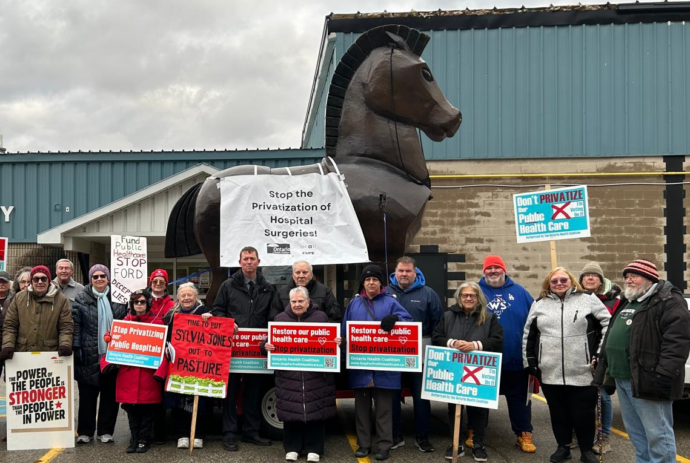 Using a Trojan Horse theme for the province wide protest against the lowering of staff at hospital across the province CUPE takes the “horse” to make their point – the lowering of staff is a part of the governments plan to privatize medicine in Ontario. Research by OCHU-CUPE estimates that on average hospitals across Ontario should be increasing hospital staffing by about five per cent annually to meet rising demand.
Jacqui Curtis, registered practical nurse and president of CUPE 1065, said there was a dire need for more staff at Joseph Brant, as workplace morale was plummeting due to heavy workloads.
“We are seeing a growing volume of patients without a corresponding increase in staffing,” she said. “The decline in our working conditions is causing higher levels of exhaustion, anxiety, and burnout.”
Earlier this year, a survey commissioned by OCHU-CUPE found that a large percentage of the union’s hospital sector members were struggling with mental health issues as a direct result of their poor working conditions (62 per cent said they had high stress levels and 44 per cent said they had trouble sleeping).
“Frontline workers are critical to the functioning of a hospital, but it seems that this government has it in for us,” Curtis said. “You’d think the government would be investing in improving our working conditions and providing us resources to best serve patients. Instead, they cut our salaries with Bill 124 and demand that we do more and more with less – which is why we have a staffing crisis. These new cuts will drive more staff to leave and force patients to wait and wait.”

 By Pepper Parr By Pepper Parr
November 28th, 2024
BURLINGTON, ON
Now that the federal Conservatives have chosen their nominee for the federal election that has to take place before June 2025 – the Burlington provincial Liberals are letting people know that they will be choosing their candidate on December 15th ,
Date: Sunday, December 15
Meeting Start Time: 1:30 pm
Location: Central Arena Auditorium, 519 Drury Lane, Burlington, ON, L7R 2X3
Candidates for Nomination: Andrea Grebenc, Oliver Parker
 Andrea Grebenc – seeking the Liberal nomination for the provincial Liberal Party. 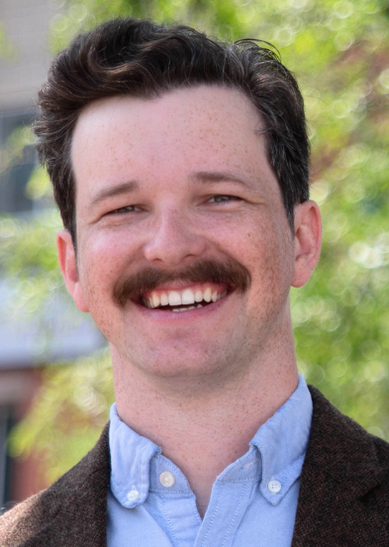 Oliver Parker – seeking the Eligible Voters: Residents of the Burlington electoral district who are members of the Burlington Provincial Liberal Association as of 5:00 pm on December 1.
Members will receive an official notice from the Ontario Liberal Party prior to the Nomination Meeting date.
The Liberals have a pretty open membership criteria – be at least 14 years of age and live in the riding. There is no membership fee to belong to the party. Check with one of the candidates for more information if you are interested in becoming a mamber.
A provincial election does not have to take place until 2026 – the sense amongst most people is that Premier Ford will call an election in 2025 – possibly as early as January.

 By Pepper Parr By Pepper Parr
November 27th, 2024
BURLINGTON, ON
This article has been revised
The Burlington Federal Conservatives have decided who their candidate will be in the next federal election that has to take place before October 20, 2025, to elect members of the House of Commons to the 45th Canadian Parliament.
 Emily Brown chatting up a resident during the Appleby Line Festival. Emily Brown was chosen by a secret ballot at a meeting that was described by a person attending as a “packed house” with people outside waiting to get in.
Connor Fraser, a newcomer to Burlington politics, was also seeking the nomination.
Current MP Karina Gould is expected to run again.
Gould serves as the House Leader for the Government, a job understood by few who are not politically active.
It is a 24/7 job – always on call, always beside the Prime Minister and on her feet more than anyone else when the House is sitting.
Gould has a strong following – the concern will be – how strong a following does Leader of the Opposition Pierre Poilievre have and what will the poor view of the Prime Minister have on the people of Burlington?
At least we now know who the candidates in Burlington are going to be.

 By Pepper Parr By Pepper Parr
November 27th, 2024
BURLINGTON, ON
It was formed a couple of months after the 2024 budget was passed
Some people were livid when they experienced a 15.9% tax increase in 2023 and then 10.24% in 2024. They are now looking at close to 8% for 2025.
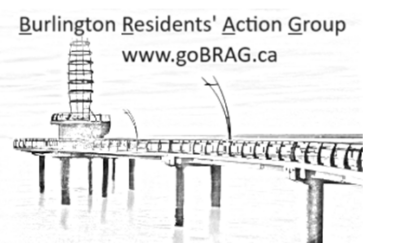 The public protest morphed into a small group that gave themselves the name BRAG – Burlington Residents’ Action Group. It took a bit of time for the group to figure out how they would organize themselves. Some people left early in the game but after a few months, there was a structure and an understanding on how they would organize themselves. The public protest morphed into a small group that gave themselves the name BRAG – Burlington Residents’ Action Group. It took a bit of time for the group to figure out how they would organize themselves. Some people left early in the game but after a few months, there was a structure and an understanding on how they would organize themselves.
The first decision was to decide they would operate as a collective – decisions made would have a consensus – no one would be making statements on behalf of the group until there was agreement.
Every person involved had one focus – the city needed to cut back on the spending and justify what they were spending.
BRAG has four Directors: Eric Stern, Lynn Crosby, Stephen White, and Caren Burcher.
 Eric Stern serves as the spokesperson for Brag. Stern serves as the public face of BRAG, which is an incorporated not-for-profit organization. He said recently that: ”When the budget dropped we wanted to get started right away so we divided the budget into sections and assigned each section to one person.
“Each person read their assigned portions which was about 80 pages in length. The group made two passes through the 615 page document.
“The first pass involved each person looking at a set number of pages. I purposely took the last set of pages because, in the 2024 budget, all the meaningful information was at the end of the budget.
“As it turns out, in the 2025 budget, all the meaningful information was at the start of the document. Suddenly I was learning an awful lot about creeks. I have lots of memories of riding my banana bike around Rambo Creek and quickly questioned the need for $2,000,000 for erosion control on a 245-metre section of Rambo Creek.
“We then did a second pass on the budget based on areas of professional expertise and interest. In the second pass, individuals looked at broad topic areas: Transit, Digital Services and Human Resources spending.
“The people with expertise dug into the issues identified by others in the first pass and found new items to look at.
“Our results from the first pass were:
1 – an open letter to the council on errors in the budget
2 – publishing the results of the BRAG heat pump survey, interest-free loans for heat pumps were mentioned in the mayor’s summary budget but dropped from the detailed budget.
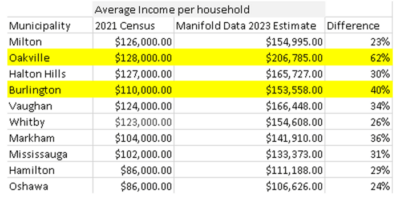 The average income information is likely based on data from the 2021 Census and Manifold Data Mining. 3 – “The chart comparing property taxes and average income concerned me” said Stern. “I found the concept of using average income as a basis for taxation to be profoundly unfair and did a deep dive into how the city may have come up with the numbers in the chart. Oddly the city provides percentages and a graph but does not quote where the information came from.”
Looking back, Stern admits that “We were rushed and unable to research all the issues thoroughly. The city released a document that had some data but not nearly enough to be useful. When we got the Budget binder we were able to get at raw data and begin some analysis. The experience gained this year will serve us well next year.”
“The one theme that emerged within the group was that Burlington had orchestrated the budget engagement in a manner that prevented real engagement. Jim Barnett, Stephen White, Lynn Crosby and I all delegated on this subject. We want to see changes during the 2026 budget.”
“We had virtual meetings but we also circulated ideas and information over email so that issues did not have to wait for a meeting to be discussed.”
BRAG has volunteer members who live in every ward in Burlington.
Better than that BRAG has attracted people who have expertise that the group doesn’t have. A number of people have come forward and asked if they could help. They didn’t want to be “members” but they did want a place where their views could be heard and absorbed.
These are people who have sent notes to the Mayor or Council members and been ignored.
At this point in time, the city is not able to say just what the tax rate is going to be. The numbers from the Region have yet to be determined and will not be known until December 4th when the Regional Council meets next.
Regional Council may need to spend more time on their budget and that could take until December 11th for the Region to be able to say how much the city is going to have to collect on their behalf.
Burlington sends out tax bills that include taxes being collected for the city, for the Regio, for the Police Services, and the Boards of Education.
BRAG argues, correctly, that the city is responsible for what it spends
There are four lines on the tax bill
City spending
Regional Spending
Police Services spending
Boards of Education spending.
BRAG is focused on that first line – city spending. It has done a superb job – Burlington is a better place as a result of what BRAG has done.


 By Serhi Tarasov By Serhi Tarasov
November 27th, 2024
BURLINGTON, ON
Do you want to download Aviator APK in Canada? Check out the system requirements first. We will tell you what specifications your device should have and how to download the application.
When installing a casino APK to play Aviator, there are various technical features to consider, ensuring smooth operation and a great gaming experience. Firstly, it is important to have a certain operating system, as most APKs are designed for Android and iOS, so make sure your smartphone is running on a suitable OS. Users should provide enough memory on their smartphone or tablet, often at least 100 MB of free space to download Aviator APK.
A reliable internet connection is essential, especially Wi-Fi or high-speed mobile data, as this will ensure smooth gaming and fast updates. Also, make sure your device has enough RAM, preferably 2 GB or more, to ensure the app runs without lags or crashes. The app may require permissions that cover access to storage, network connections and location services. Finally, always download the APK from a trusted source or from the official bookmaker website to avoid security risks. By meeting these requirements, players can fully enjoy the fast-paced, multiplier-collecting excitement that Aviator offers.
How to Download the Aviator Mobile APK?
 Playing Aviator via a mobile app is a convenient and enjoyable way to experience this thrilling game. To get started, follow these steps to download the Aviator app and play on your phone or tablet: Playing Aviator via a mobile app is a convenient and enjoyable way to experience this thrilling game. To get started, follow these steps to download the Aviator app and play on your phone or tablet:
- First and foremost, you need to select a trustworthy and reputable betting app that offers Aviator gaming. Look for well-known bookmakers with positive reviews from users;
- Once you have chosen your preferred betting app, head to their website to download the APK for Aviator gaming. Make sure you have enough storage space available and a stable internet connection;
- After downloading, open the APK file and follow the installation instructions. If prompted, allow any necessary permissions for the app to function correctly;
- Once the Aviator app is installed, open it and either sign up for a new account or log in to your existing one;
- Look for the Aviator game within the app’s menu or search bar and click on it to start playing;
- Before the game starts, place a bet and click on the start button. After the round starts, the plane will start to take off, increasing the winning coefficient. However, it is important to click on the withdrawal button in time before the plane flies away.
 Tips to Improve the Gameplay in the Aviator App Tips to Improve the Gameplay in the Aviator App
There are some tips that will help you increase your chances of winning and enjoy the game more. To make it easier to start playing Aviator, select a betting app with a simple user interface and fast loading. Make sure that your internet connection is stable to avoid interruptions in the game. Also, take advantage of the special bonuses and promotions available on the Aviator app. You should also familiarize yourself with the rules and tactics of the game before placing bets. Following these tips can help players enhance their enjoyment of playing Aviator on their mobile devices.
Conclusion
In conclusion, enjoying Aviator on your mobile device depends on meeting the above technical specifications and following best practices during installation and play. A stable internet connection greatly enhances your experience, facilitating smooth and reliable rounds of Aviator app. Understanding the rules and techniques of the game, taking advantage of bonuses, and starting with small bets will significantly increase your chances of success. Furthermore, choosing a reliable app is vital for the security and optimal performance. With these considerations in mind, players can dive into the dynamic, multiplier-rich world of Aviator fully prepared for an exciting and rewarding experience.

 By ALENA DZIBROVA By ALENA DZIBROVA
November 27th, 2029
BURLINGTON, ON
Discover essential insights on living costs, job opportunities, taxes, housing, and more in this comprehensive guide to Canadian life.
Such an attractive country with its social security, and economic and political stability, Canada is thought to be a land of great opportunities. Not to mention nature. So, what nuances can be encountered at first, having moved to Canada, and how in general to prepare for such a move is in the material.
Pros and Cons of Canada
Canada welcomes migrants because it needs skilled professionals. For example, as of January 2023, immigrants held 36% of physician positions and 41% of engineering positions. The share of foreigners among business owners with employees is 33%. There are also special programs such as the Alberta PNP Program for a simpler emigration process, which further fuels people’s interest. But as with any other country, there are pros and cons:
Pros:
- High standard of living and high level of income;
- The government supports small and medium-sized businesses – assistance in financing, reduced rates on credit, and deferred payment;
- Unbelievable nature – ocean, lakes, rivers, mountains, forests. The beauty is breathtaking and it is not just nearby, it is everywhere;
- Free healthcare for citizens and residents of the country;
- Developed economy and stable political situation;
- Canada is multicultural and multinational, thanks to which adaptation is comfortable;
- The possibility of obtaining a passport after 3 years of legal residence.
Cons:
Jobs in Canada
In large cities, there are more chances to find a prestigious and promising job. In smaller towns, there is less competition and a greater shortage of workers, which increases the chances of finding a job quickly. There are also many recruitment agencies in Canada, you can find them by searching for “recruitment agency in Canada” on Google. Up to 80% of people find a job on the recommendations of acquaintances.
You can find a job on popular sites:
- Job Bank;
- com;
- Indeed;
- Eluta;
- WowJobs;
In-Demand Occupations
The most popular occupations for foreigners include:
- IT specialists and interactive media developers;
- Business, finance, administration;
- Doctors, nurses;
- Teachers and civil servants;
- Sales and service personnel, truck drivers;
- Workers in production and public utilities;
- Workers in construction, welders.
Salaries
The minimum wage in Canada in 2024 is 2644 Canadian dollars. Average salary – from 5200 Canadian dollars. The amount may vary depending on the province and type of profession.
Cost of Living in Canada
Every year the cost of living in Canada is becoming more expensive, this is influenced by inflation, changes in the real estate market, transportation services, and others. On average, the minimum budget for one person to live in Canada is from 1300 to 1600 dollars. For a family with two children, this amount reaches 1700 to 2200 dollars.
Cost of Food
 Food prices here are cheaper than in Europe. Food prices here are cheaper than in Europe. For a week one person can buy products for 50 dollars, including meat, as it is the most expensive, for example, 800 grams of chicken costs 10 dollars, potatoes – up to 2 dollars per kilogram, apples also up to 2 dollars, bananas – 60 cents per kilogram, cereals – 1-2 dollars. Tobacco products are very expensive, as well as alcohol, for example, a pack of cigarettes costs 11 dollars.
Transportation Costs
For $3, you can ride any transportation, even the subway, for 2 hours. The transportation system is well developed, both within the city and intercity. A monthly bus pass will cost about 100 dollars. Expenses for a personal car will cost about $1,000 a month, including insurance, parking, gasoline, and repairs. It is more profitable to rent a car for a day – $50, including gasoline.
Taxes
Canada has two types of tax: income tax and consumption tax. Consumer (national) tax is a sales tax on goods or services purchased in Canada and ranges from 5 to 15%. Some goods may be exempt from the tax. Income tax in Canada depends on the size of the annual salary, it can vary from 15 to 33%. The tax rate varies greatly from province to province.
Housing in Canada
The cost of rent depends on the city, in big cities, it is more expensive due to high demand. On average, renting a studio ranges from 700 to 1000 dollars, with one bedroom – from 900 to 1100, with two bedrooms – from 1000 to 1300 dollars.
Utilities vary in cost from city to city, cheapest in Montreal – 75 dollars, more expensive in Calgary and Hamilton – 205 dollars. Internet costs from $55 to $95 per month, and cell phone service costs about $95 per month.
Conclusion
We hope you found this article useful. We have tried to gather the most important information and fit it into a short article. Now you have more knowledge about such a beautiful country as Canada and you can take a more informed approach to move.

 By Staff By Staff
November 27th, 2024
BURLINGTON, ON
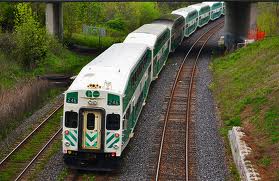 There will be GO service interruptions this weekend. Starting late evening this Friday, November 29 until end of service on Sunday, December 1, Lakeshore West rail service will be temporarily modified to accommodate critical track work that will bring faster, more frequent service across the network.
During this time, there will be no GO Train service between Union Station and Oakville GO. GO Train service will only run between Oakville GO and Niagara Falls GO with minor schedule adjustments.
Replacement GO Buses will be available at Oakville GO and Clarkson GO, running express to and from Union Station Bus Terminal.
There will be no GO Transit service at Exhibition, Mimico, Long Branch and Port Credit GO stations. Customers traveling to and from those stations are encouraged to use local transit options.
For Long Branch customers, the temporary pathway from Edgeware Drive will remain open, however access to the north platform from the temporary pathway will be closed. There will be no access to the station or the parking lot from 11:59 p.m. on Nov. 29 to Dec. 2 at 5:00 a.m.
Regular service will resume on Monday, December 2.
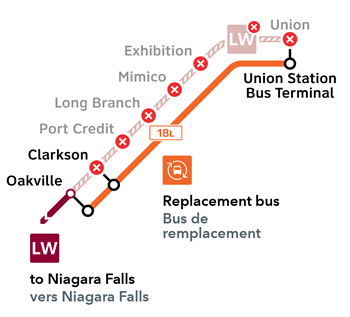


 By James Porthouse By James Porthouse
November 27th, 2024
BURLINGTON, ON
This information is not professional investment advice. Investors are advised to do their own research into individual stocks before making an investment decision.
The five stocks with the largest dollar value of insider acquisitions in the public market are:
|
| Paramount Resources Ltd —–Buy Quantity: 100,000 Average cost: $31.30 Total: $3,129,630.00 Options Issued: 72,600 Average cost: $15.61 Total: $1,133,310.00 |
| Insider |
Relationship |
Transaction |
Date |
Quantity |
Price |
Total |
| Lee, Bernard K. |
5 – Senior Officer of Issuer |
51 – Exercise of options |
11-26-24 |
72,600 |
$15.61 |
$1,133,310.00 |
| Riddell, Brenda Gail |
3 – 10% Security Holder of Issuer |
10 – Acquisition or disposition in the public market |
11-25-24 |
100,000 |
$31.30 |
$3,129,630.00 |
|
| Sprott Inc —–Buy Quantity: 16,000 Average cost: $60.63 Total: $970,125.88 |
| Insider |
Relationship |
Transaction |
Date |
Quantity |
Price |
Total |
| George, Whitney |
7 – Director or Senior Officer of Insider or Subsidiary of Issuer (other than in 4,5,6), 5 – Senior Officer of Issuer |
10 – Acquisition or disposition in the public market |
11-26-24 |
16,000 |
$60.63 |
$970,125.88 |
|
| Altus Group Limited —–Buy Quantity: 9,100 Average cost: $57.50 Total: $523,266.00 |
| Insider |
Relationship |
Transaction |
Date |
Quantity |
Price |
Total |
| Brennan, William |
4 – Director of Issuer |
10 – Acquisition or disposition in the public market |
11-25-24 |
100 |
$57.66 |
$5,766.00 |
| Brennan, William |
4 – Director of Issuer |
10 – Acquisition or disposition in the public market |
11-22-24 |
9,000 |
$57.50 |
$517,500.00 |
|
| Veren Inc —–Buy Quantity: 21,000 Average cost: $7.31 Total: $153,510.00 |
| Insider |
Relationship |
Transaction |
Date |
Quantity |
Price |
Total |
| Stadnyk, Myron Maurice |
4 – Director of Issuer |
10 – Acquisition or disposition in the public market |
11-26-24 |
21,000 |
$7.31 |
$153,510.00 |
|
| South Bow Corporation —–Buy Quantity: 2,030 Average cost: $36.90 Total: $74,907.00 |
| Insider |
Relationship |
Transaction |
Date |
Quantity |
Price |
Total |
| Ryhorchuk, Shannon Georgina |
5 – Senior Officer of Issuer |
10 – Acquisition or disposition in the public market |
11-22-24 |
2,030 |
$36.90 |
$74,907.00 |
The five stocks with the largest dollar value of insider dispositions in the public market are:
|
| Kinross Gold Corporation —–Sell Quantity: -1,300,000 Average cost: $14.00 Total: -$18,200,000.00 |
| Insider |
Relationship |
Transaction |
Date |
Quantity |
Price |
Total |
| Rollinson, Jonathan Paul |
4 – Director of Issuer, 5 – Senior Officer of Issuer |
10 – Acquisition or disposition in the public market |
11-21-24 |
-1,300,000 |
$14.00 |
-$18,200,000.00 |
|
| BioSyent Inc —–Sell Quantity: -1,154,637 Average cost: $11.12 Total: -$12,839,773.65 |
| Insider |
Relationship |
Transaction |
Date |
Quantity |
Price |
Total |
| Driscoll, Blair |
3 – 10% Security Holder of Issuer |
10 – Acquisition or disposition in the public market |
11-22-24 |
-230,800 |
$11.12 |
-$2,566,496.00 |
| Driscoll, Merrilyn Joy |
3 – 10% Security Holder of Issuer |
10 – Acquisition or disposition in the public market |
11-22-24 |
-230,800 |
$11.12 |
-$2,566,496.00 |
| Driscoll, Sean |
3 – 10% Security Holder of Issuer |
10 – Acquisition or disposition in the public market |
11-22-24 |
-230,800 |
$11.12 |
-$2,566,496.00 |
| FAX Investments Inc. |
3 – 10% Security Holder of Issuer |
10 – Acquisition or disposition in the public market |
11-22-24 |
-230,800 |
$11.12 |
-$2,566,496.00 |
| Federated Capital Corp. |
3 – 10% Security Holder of Issuer |
10 – Acquisition or disposition in the public market |
11-22-24 |
-230,800 |
$11.12 |
-$2,566,496.00 |
| Lockhard, Peter Douglas |
4 – Director of Issuer |
10 – Acquisition or disposition in the public market |
11-25-24 |
-637 |
$11.45 |
-$7,293.65 |
|
| Cameco Corporation —–Sell Quantity: -36,070 Average cost: $83.47 Total: -$3,010,732.50 Options Issued: 34,570 Average cost: $15.27 Total: $527,883.90 |
| Insider |
Relationship |
Transaction |
Date |
Quantity |
Price |
Total |
| Aitken, Lisa Lorene |
5 – Senior Officer of Issuer |
10 – Acquisition or disposition in the public market |
11-25-24 |
-1,500 |
$81.17 |
-$121,755.00 |
| Clark, Dale Robert |
5 – Senior Officer of Issuer |
51 – Exercise of options |
11-22-24 |
20,100 |
$15.27 |
$306,927.00 |
| Clark, Dale Robert |
5 – Senior Officer of Issuer |
10 – Acquisition or disposition in the public market |
11-22-24 |
-20,100 |
$83.50 |
-$1,678,350.00 |
| Thorne, Andrew Miles |
5 – Senior Officer of Issuer |
51 – Exercise of options |
11-21-24 |
14,470 |
$15.27 |
$220,956.90 |
| Thorne, Andrew Miles |
5 – Senior Officer of Issuer |
10 – Acquisition or disposition in the public market |
11-21-24 |
-14,470 |
$83.66 |
-$1,210,627.50 |
|
| Fairfax Financial Holdings Limited —–Sell Quantity: -1,500 Average cost: $1,971.00 Total: -$2,956,500.00 |
| Insider |
Relationship |
Transaction |
Date |
Quantity |
Price |
Total |
| Bradstreet, F. Brian |
7 – Director or Senior Officer of Insider or Subsidiary of Issuer (other than in 4,5,6) |
10 – Acquisition or disposition in the public market |
11-22-24 |
-1,500 |
$1,971.00 |
-$2,956,500.00 |
|
| Metro inc —–Sell Quantity: -25,695 Average cost: $90.10 Total: -$2,315,046.80 Options Issued: 28,600 Average cost: $41.16 Total: $1,177,176.00 |
| Insider |
Relationship |
Transaction |
Date |
Quantity |
Price |
Total |
| Bich, Geneviève |
5 – Senior Officer of Issuer |
51 – Exercise of options |
11-25-24 |
7,300 |
$41.16 |
$300,468.00 |
| Bich, Geneviève |
5 – Senior Officer of Issuer |
10 – Acquisition or disposition in the public market |
11-25-24 |
-4,395 |
$90.00 |
-$395,550.00 |
| Thibault, François |
5 – Senior Officer of Issuer |
51 – Exercise of options |
11-22-24 |
21,300 |
$41.16 |
$876,708.00 |
| Thibault, François |
5 – Senior Officer of Issuer |
10 – Acquisition or disposition in the public market |
11-22-24 |
-21,300 |
$90.12 |
-$1,919,496.80 |
What is Insider Trading?
How Insider Trading works.

 By Tom Parkin By Tom Parkin
November 27th, 2024
BURLINGTON,ON
Canadian retail sales rose to a new peak in September, but not in Ontario, where they remain lower than in 2022 september retail sales hit new highs in British Columbia, Alberta and Quebec, lifting national sales by $284 million from August, and reaching a new peak of $66.9 billion, according to Statistics Canada data released Friday.
 This isn’t happening as often in Ontario. But unlike other Canadians, the Ontario consumer isn’t tapping their pay device. Ontario’s September retail sales fell $23.9 million from August and remain $1.1 billion below a peak in June 2022.
Under the unresolved housing crisis driving high housing costs and huge mortgage debt, the impact of colliding waves of cost pressures on Ontarians has been outsized.
With pump prices passing $2 per litre in March 2022 and food inflation hitting 8.8 per cent in April, the Bank of Canada added financial pressure on heavily borrowers with a full point to interest rates in June, the month retailing peaked.
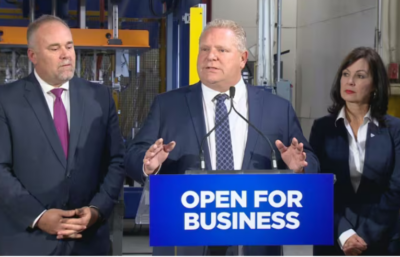 A wish more than something Premier Ford has delivered on. Ontario is Canada’s leader — in economic malaise
This fall the economic news for Ontario has been almost all bad, and strikingly different than the trends we’re seeing in the rest of the country. Most of this has been documented by Data Shows in the past few months.
The housing crisis persists under the Ford PCs’ approach. By priorizing sprawl, caving to NIMBYism on density and refusing to make public investments, the Ford PCs have put wealthy developer-landholders in control of the pace of development. The result is third-worst per capita house starts among the 10 provinces.
It is one thing to be a high cost of living jurisdiction with rising incomes and strong housing construction. That’s the story in British Columbia, where renting and buying a home in the Lower Mainland is brutally expensive but the average wage is highest in Canada and housing starts are strong. BC still has a lot to do on housing and affordability, but a lot has already been done.
 It’s quite a different story in Ontario. Housing is brutally expensive but Ontario’s average wage is now below the Canadian average and fell this July and August. It’s quite a different story in Ontario. Housing is brutally expensive but Ontario’s average wage is now below the Canadian average and fell this July and August.
The province’s manufacturing sector, particularly the critical auto sector, is shrinking in jobs and sales. Residential construction, because of weak housing starts, is punching below potential. The vaunted Ring of Fire project remains stalled in court as an offer of federal dollars to engage communities goes untapped. And there is a looming gap in electricity supply, an issue Data Shows will explore soon.
Ontario’s rate of union membership is second lowest in Canada, below all other provinces except Alberta. Ontario unemployment has been above national rates for most of the past four years. Ontario’s personal bankruptcies are rising fastest in Canada.
The end result is a weak consumer, weak retail sales and a have-not Ontario receiving federal equalization aid.
Tom Parkin is a political commentator with a social democratic perspective.

 By Staff By Staff
November 27th, 2024
BURLINGTON, ON
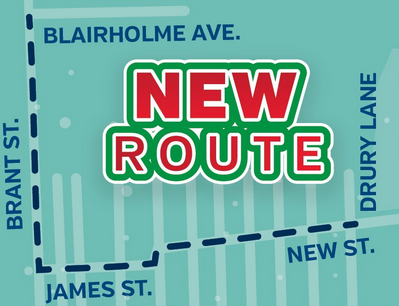 The Santa Claus parade is on Sunday, December 1st. The Santa Claus parade is on Sunday, December 1st.
Small change in the route this year – construction project requires the change.

 By Staff By Staff
November 26th, 2024
BURLINGTON, ON
Habitat for Humanity Halton-Mississauga-Dufferin (Habitat HMD) is celebrating a heartwarming milestone as the Tran Family takes title to their home in Mississauga. This special occasion marks a significant step toward strength, stability, and independence for the family, just in time for the holiday season.
The home, made possible through Habitat for Humanity’s long-standing partnership with Daniels Corporation, exemplifies what can be achieved when the community comes together.
 Tran Family and Habitat HMD CEO Eden Grodzinsk, Board Chair Lynn Fergusson and Heela Omarkhail, Vice President, Social Impact at The Daniels Corporation “Today is a celebration of not only the Tran Family but of what affordable homeownership means for so many families,” said Eden Grodzinski, CEO of Habitat HMD. “A safe, stable home is the foundation for brighter futures, and partnerships with community-minded developers like the one we have with Daniels Corporation make these dreams a reality. We are grateful to everyone who contributed their time, resources, and passion to this project. Together, we are changing lives, one family at a time.”
New homeowner Mr. Duc Tran said, “We just want to thank everyone so much for everything. Habitat’s homeownership – we never thought that would be able to afford a home for our family.”
“We are delighted to congratulate the Tran family on their journey to homeownership at Wesley Tower. Our collaboration with Habitat for Humanity Halton-Mississauga-Dufferin to provide affordable homeownership opportunities underscores our dedication to building inclusive, vibrant communities where families can thrive in homes crafted with exceptional quality. For over two decades, our enduring partnership with Habitat for Humanity affiliates has welcomed more than 80 deserving families to Daniels communities across the Greater Toronto Area, helping them establish solid foundations for brighter futures,” said Heela Omarkhail, Vice- President of Social Impact, The Daniels Corporation.
The Tran Family’s home symbolizes so much more than a roof over their heads—it is a foundation for cherished memories, a space where dreams will flourish, and a cornerstone for a brighter future.
As we celebrate their welcome home, Habitat for Humanity HMD reaffirms its unwavering commitment to tackling the pressing need for affordable housing in our communities. We continue to build hope, stability, and opportunity—one home at a time.
Habitat for Humanity Halton Mississauga Dufferin (Habitat HMD) is part of the renowned global Habitat for Humanity network, recognized for its commitment to mobilizing community resources to provide safe and decent homes to families in need. In serving Halton, Mississauga, and Dufferin communities, Habitat HMD has delivered 83 affordable housing units (68 family units plus 15 tiny homes) to families in the Region living in Indigenous communities since 1999.
Habitat HMD’s unique housing model offers a “pathway to home ownership,” filling a critical gap in the housing continuum. The organization is dedicated to combating the housing crisis in Canada and aims to transform more lives by delivering a minimum of 130 new housing units to partner families between 2022 and 2032.

|
|
 It would take effect on December 14 and run until February 15, 2025, once it has been given Royal Ascent.
It would take effect on December 14 and run until February 15, 2025, once it has been given Royal Ascent.

























































